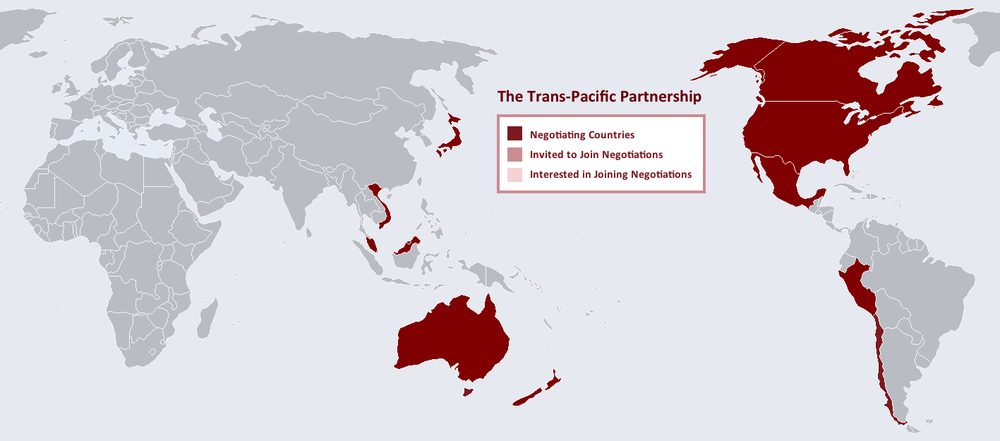
Will the Trans-Pacific Partnership Alleviate Forced Labor?
The Trans-Pacific Partnership (TPP) is the largest regional trade deal in history. Talks to create the TPP began over seven years ago and it was finally drafted on October 5, 2015. The twelve member countries, Australia, Brunei Darussalam, Canada, Chile, Japan, Malaysia, Mexico, New Zealand, Peru, Singapore, United States and Vietnam covers 792 million people and make up 40 percent of the world’s economic activity. The goal of the TPP is to promote economic growth; support the creation and retention of jobs; enhance innovation, productivity and competitiveness; raise living standards; reduce poverty in our countries; and promote transparency, good governance, and enhanced labor and environmental protections. Specifically relating to forced labor, the TPP introduced historic labor protections for workers—but to mixed reviews. Human rights groups and labor unions have criticized these new protections for being too weak while governments and corporations laud the new trade agreement as a step forward in promoting human rights.
Critics of the TPP
The critics of the TPP are concerned that four of the signatory countries (Mexico, Malaysia, Vietnam and Brunei Darussalam) have dubious labor practices and the TPP does not have provisions in place to accurately curb the forced labor practices in these countries. Vietnam has long relied on child labor and forced labor to manufacture goods. The country also has an institutionalized form of forced labor called Labor Therapy, which is sweatshop servitude in the guise of a social program to help drug addicts avoid jail time. In Mexico, child labor, forced labor and inhumane working conditions exist on farms that export fresh produce into the United States. Malaysia has grave forced labor and child labor problems and until last year was given the lowest score (Tier 3) on the Trafficking in Persons Report. When Verité interviewed Malaysian workers in the electronic industry they found that twenty-eight percent of all workers in the study sample were found to be in situations of forced labor. The situation in Malaysia is similar to many of the 85,000 migrant workers in Brunei who also face labor exploitation and trafficking, related to debt bondage from labor recruitment fees, wage theft, passport confiscation, abuse and confinement. Critics of the TPP are concerned these four countries will lower their labor standards even further to benefit from the TPP.
Proponents of the TPP
Proponents of the TPP point out the language of the agreement promotes strong labor standards. When the United States began talks to establish the TPP one if it’s requirements was that no country listed in Tier 3 of the Department of State’s Trafficking in Persons Report could be part of the agreement. In addition, every signatory country must be a member of the International Labour Organization and must agree to the elimination of forced labor; abolition of child labor and a prohibition on the worst forms of child labor. The United States government has also publically stated that it will not bring the TPP into force if the necessary labor reforms have not been made in countries such as Mexico, Malaysia, Vietnam and Brunei Darussalam. Proponents point out that if a country fails to comply with the TPP’s labor standards then trade barriers could be reinstated, thereby providing a strong economic incentive to the member countries to commit to ILO labor standards. The TPP is being hailed as the strongest free trade agreement ever created—promoting transparency in trade and fair labor practices but time will tell if the rhetoric of the TPP will match the reality.
Michelle Lillie is a Security Studies Master’s Degree candidate at Georgetown University’s School of Foreign Service.
Photo Credit: The TPP Agreement Info

